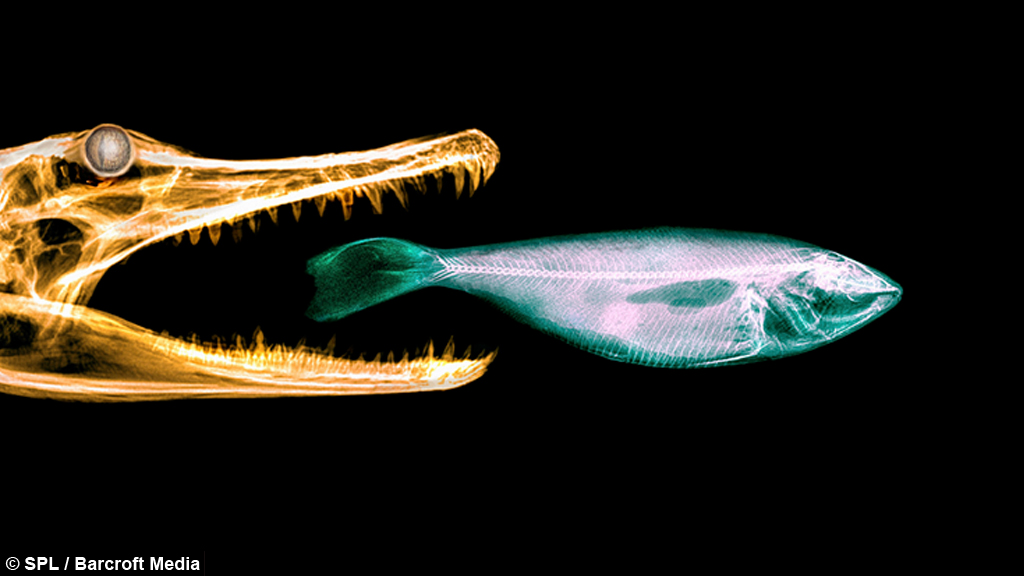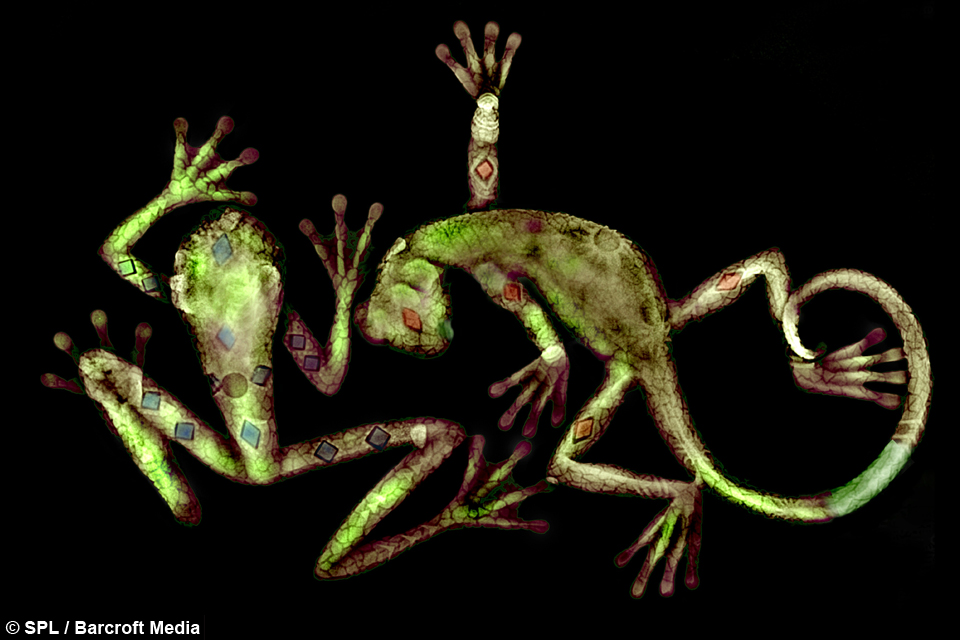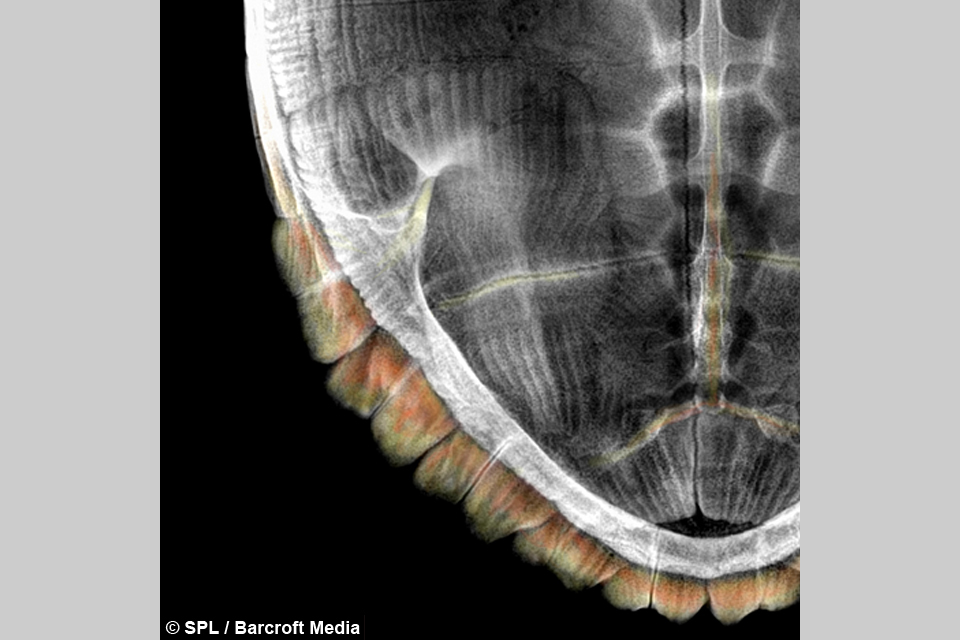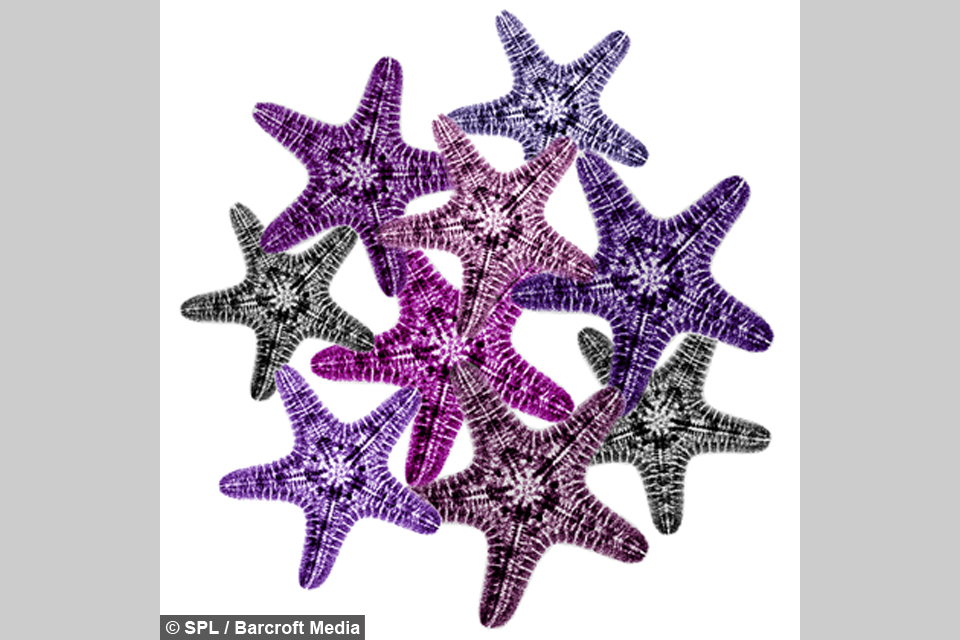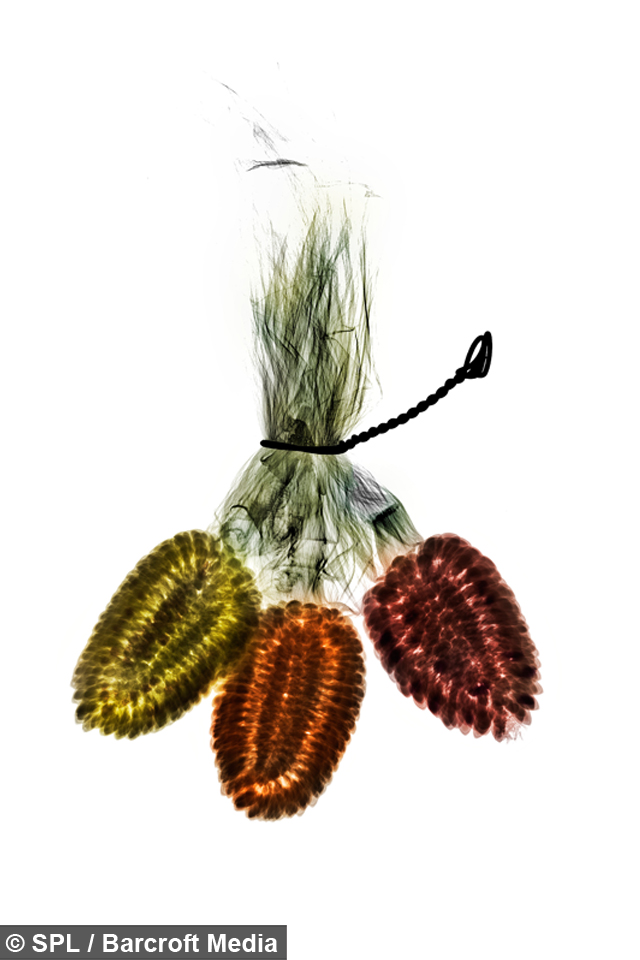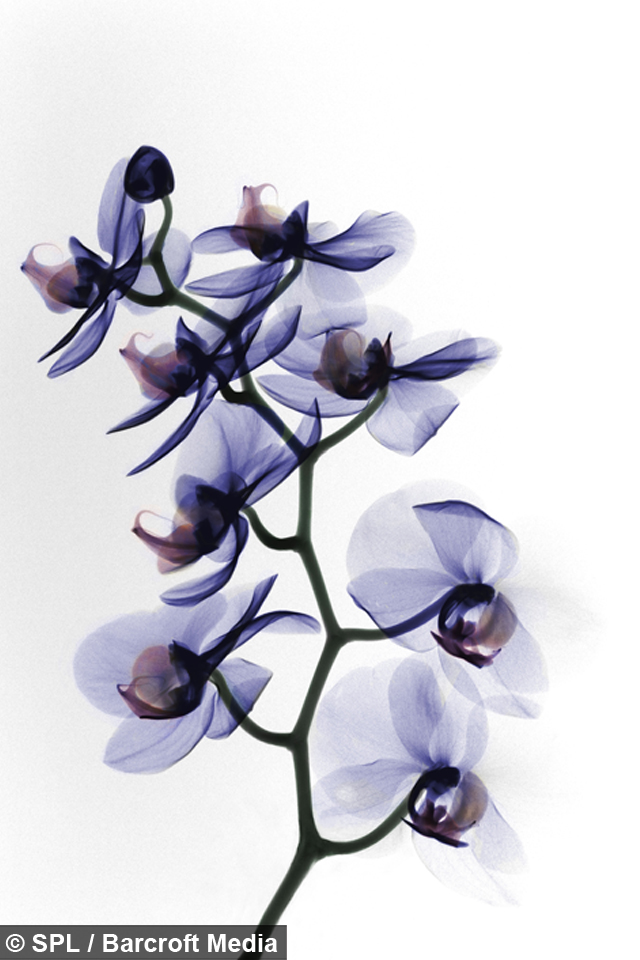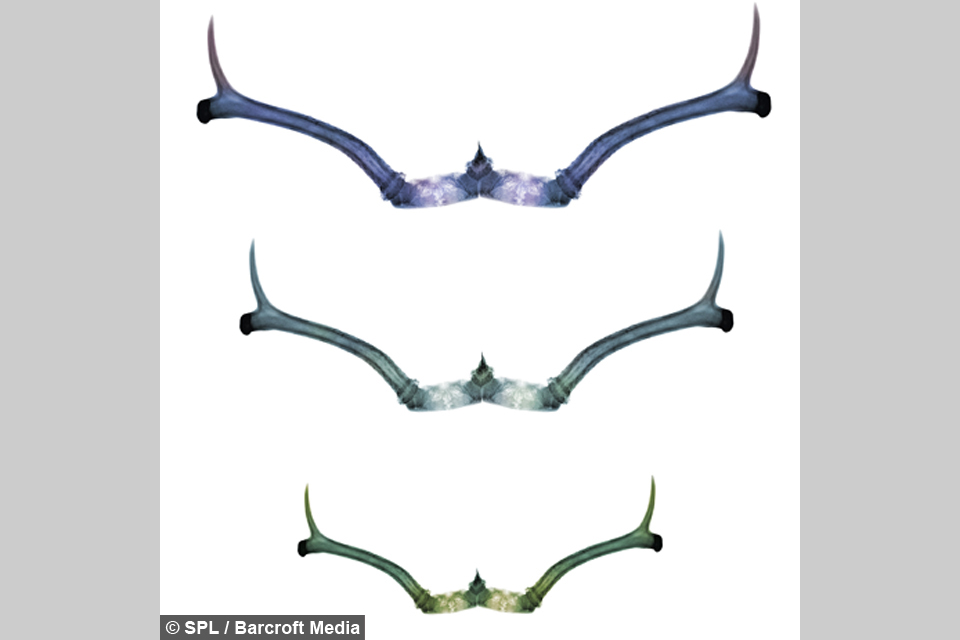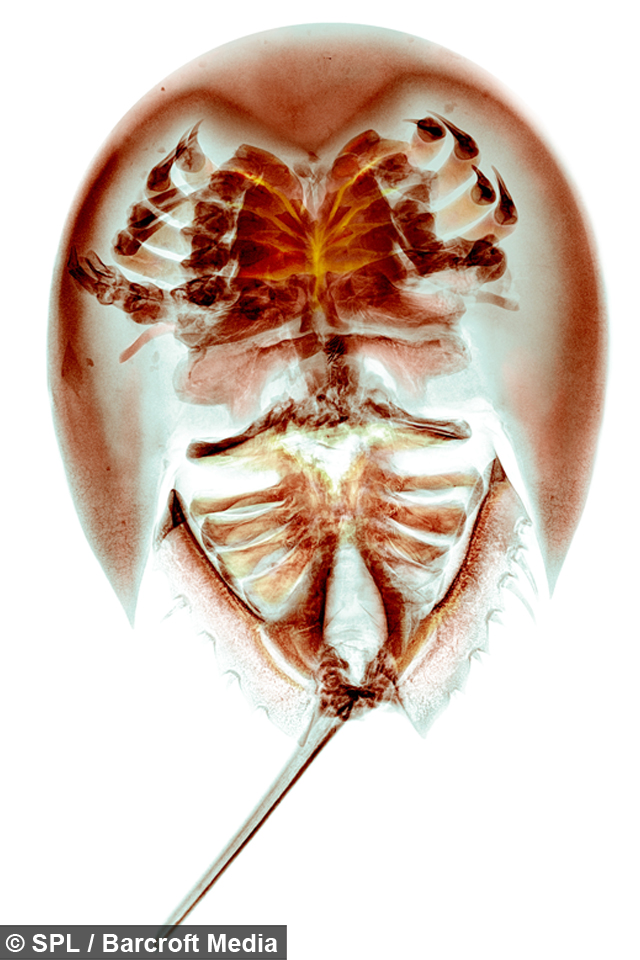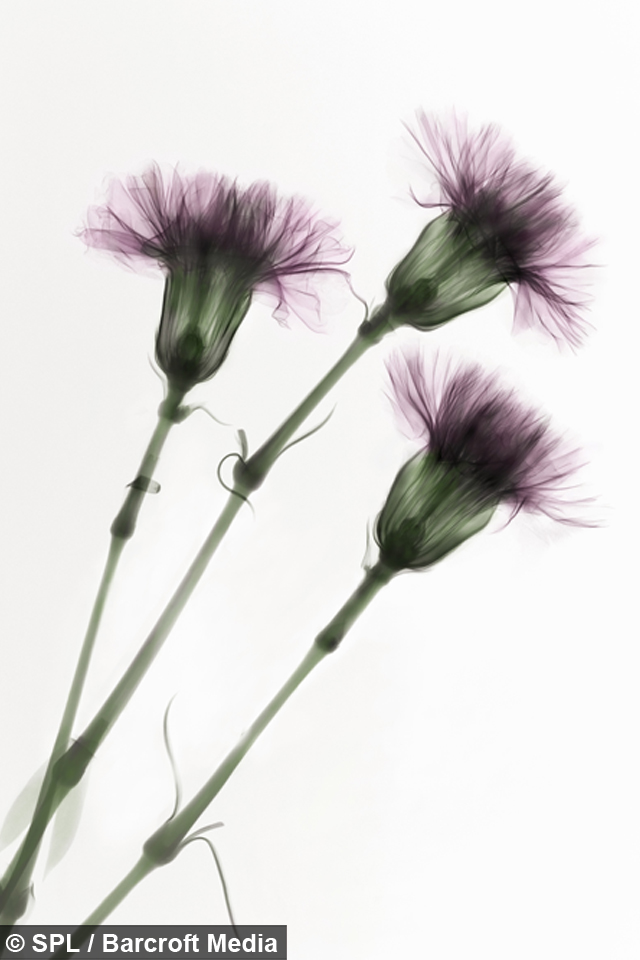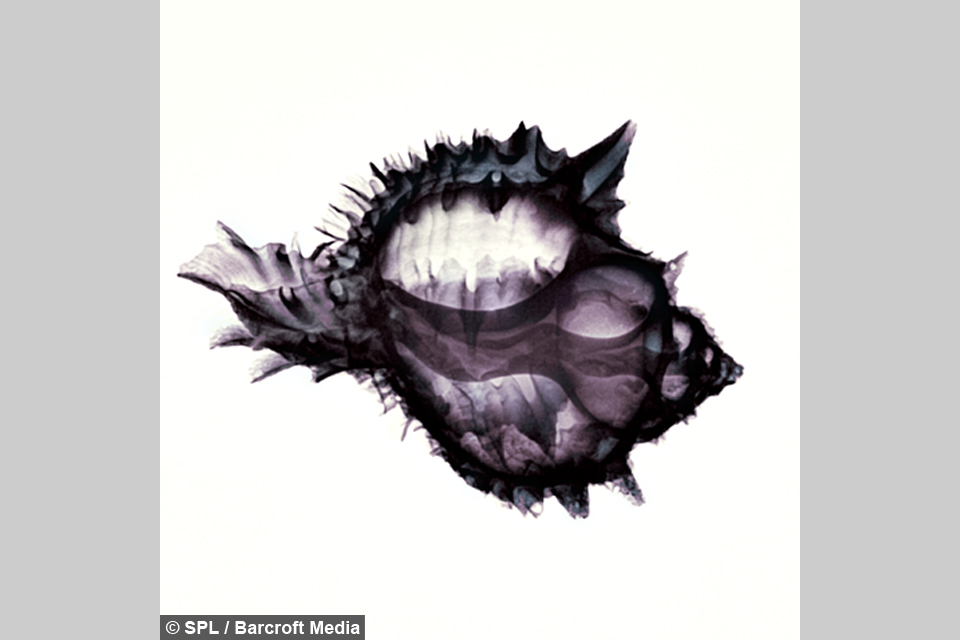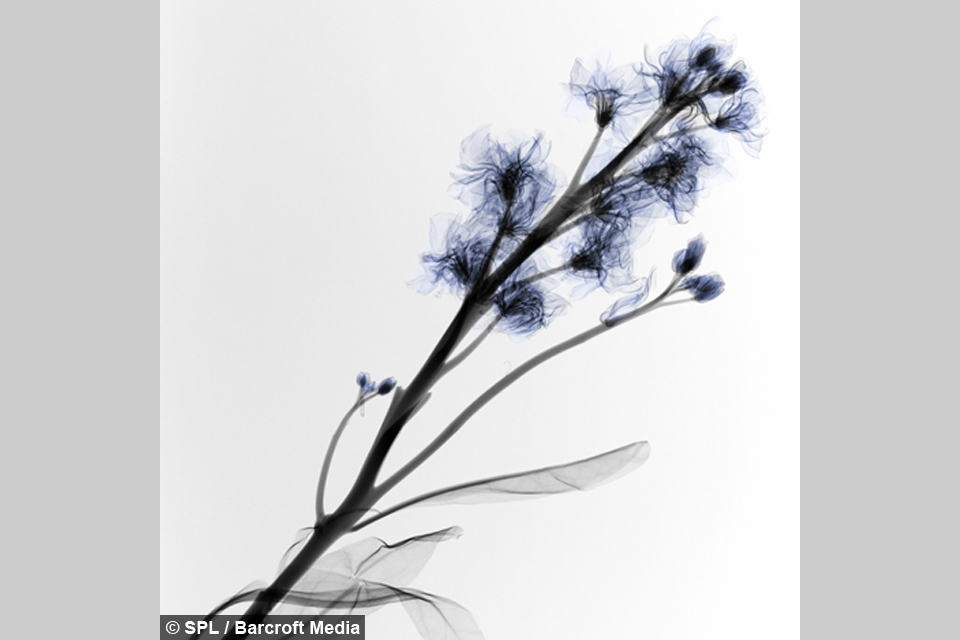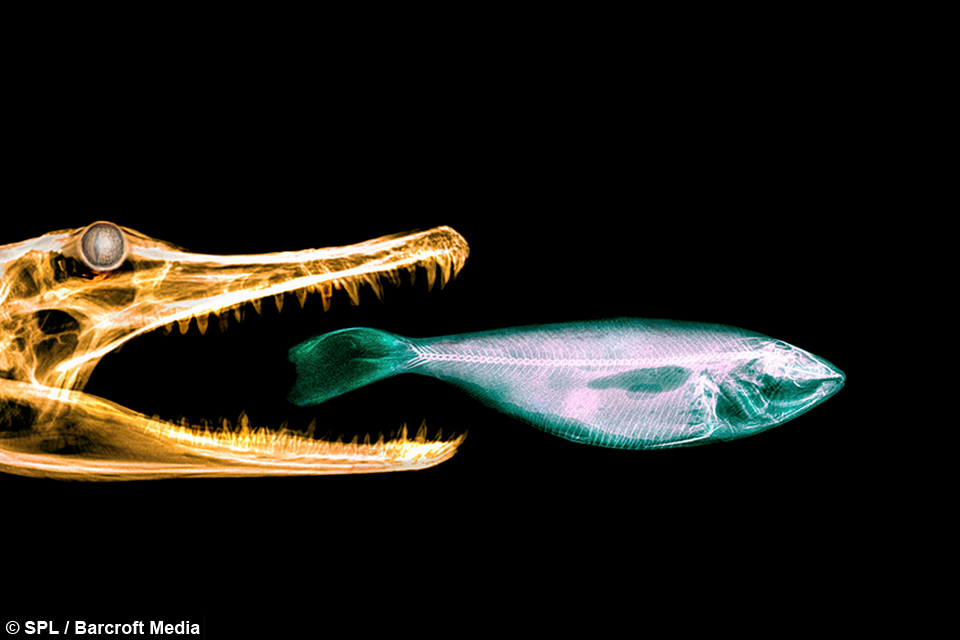Scientific X-rays Transformed into Stunning Artwork
By Amanda Stringfellow @amanda_l_s
Scroll down for the full story
These stunning coloured images show detailed x-ray images of everything from skulls and starfish to antlers and light bulbs.
Artist Paula Fontaine, from Westminster Massachusetts, created the images using a process called digital map painting.
To create the images the x-ray emission source – the head of the machine on an arm which focuses the beam – is placed over the object.
Paula then retreats behind a shielded screen before activating the x-ray exposure.
The exposure is affected by the amount of electrical energy and length of exposure she chooses for the subject to be captured.
The individual X-ray images are often tiled together from smaller rectangular individual images to make one large conglomerate image.
Pauline said: “In general I use several different types of x-ray technology to capture my images - some low energy machines, some very high energy.
“There are both medical grade and industrial machines.
“A few I've created utilise multiple exposures to create a single piece, no live creatures were used.
“The colour enhancement is done post-exposure and the images are used for a variety of purposes including educational programs, wall art and adornment for giftware.”
